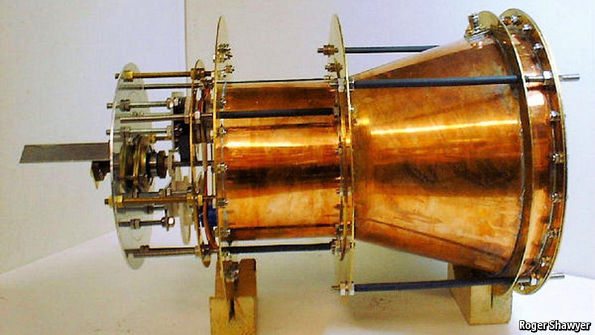Has a British engineer broken the laws of physics?
 Any reaction?
Any reaction?ROCKETS are spectacular examples of Isaac Newton’s third law of motion: that to every action there is an equal and opposite reaction. Throwing hot gas out of its engines at high speed (the action) thrusts a rocket off its launch pad and into space (the reaction). But having to carry the propellants needed to create the gas (the reaction mass) is a pain, for at any given moment during a flight the action has to propel not only the rocket itself, but also all of the remaining, unburnt propellant. Most of the effort expended in a rocket launch is therefore directed towards lifting propellant rather than payload. As a result, even the most modern rockets start off with a mass that is more than 90% propellant.
The fantasy of rocket scientists is therefore an engine that needs no propellant. And that is what Roger Shawyer, a British aerospace engineer, claims to have invented. In his view, his EMDrive (the “EM” stands for “electromagnetic”) converts electrical energy straight into thrust, with no need for reaction mass. The only trouble is, that should be impossible.
An EMDrive (see picture) is a…Continue reading
Source: Economist




